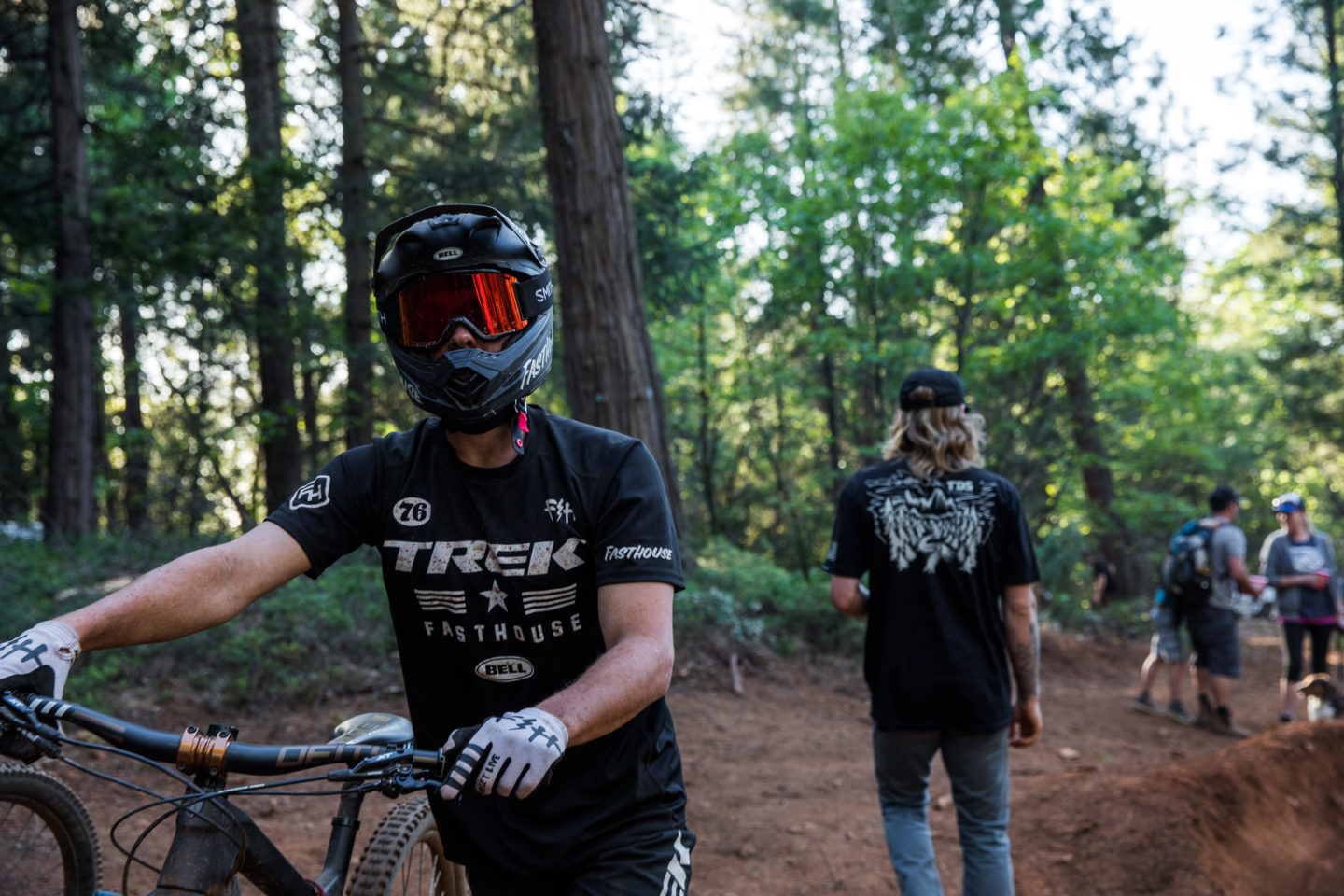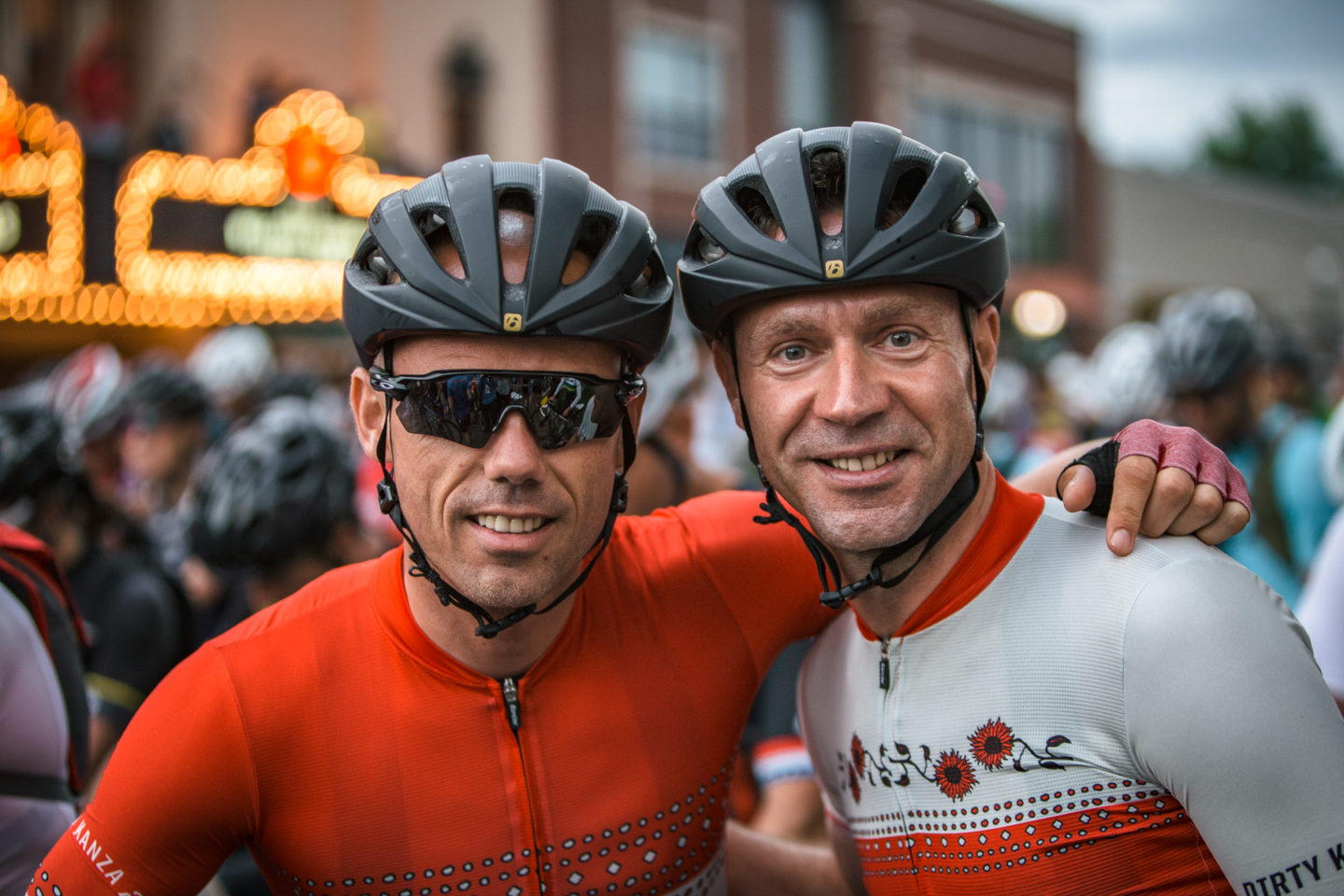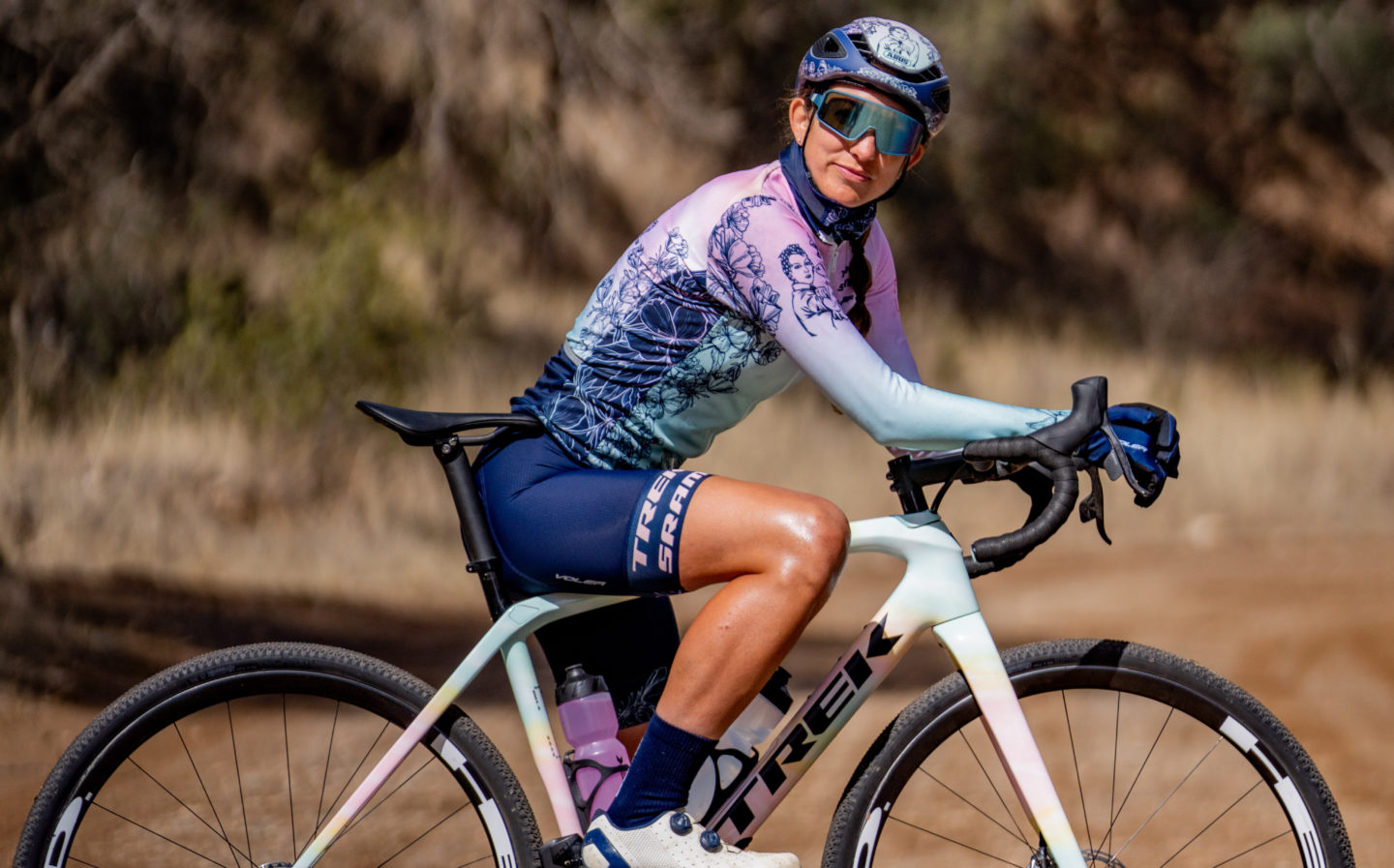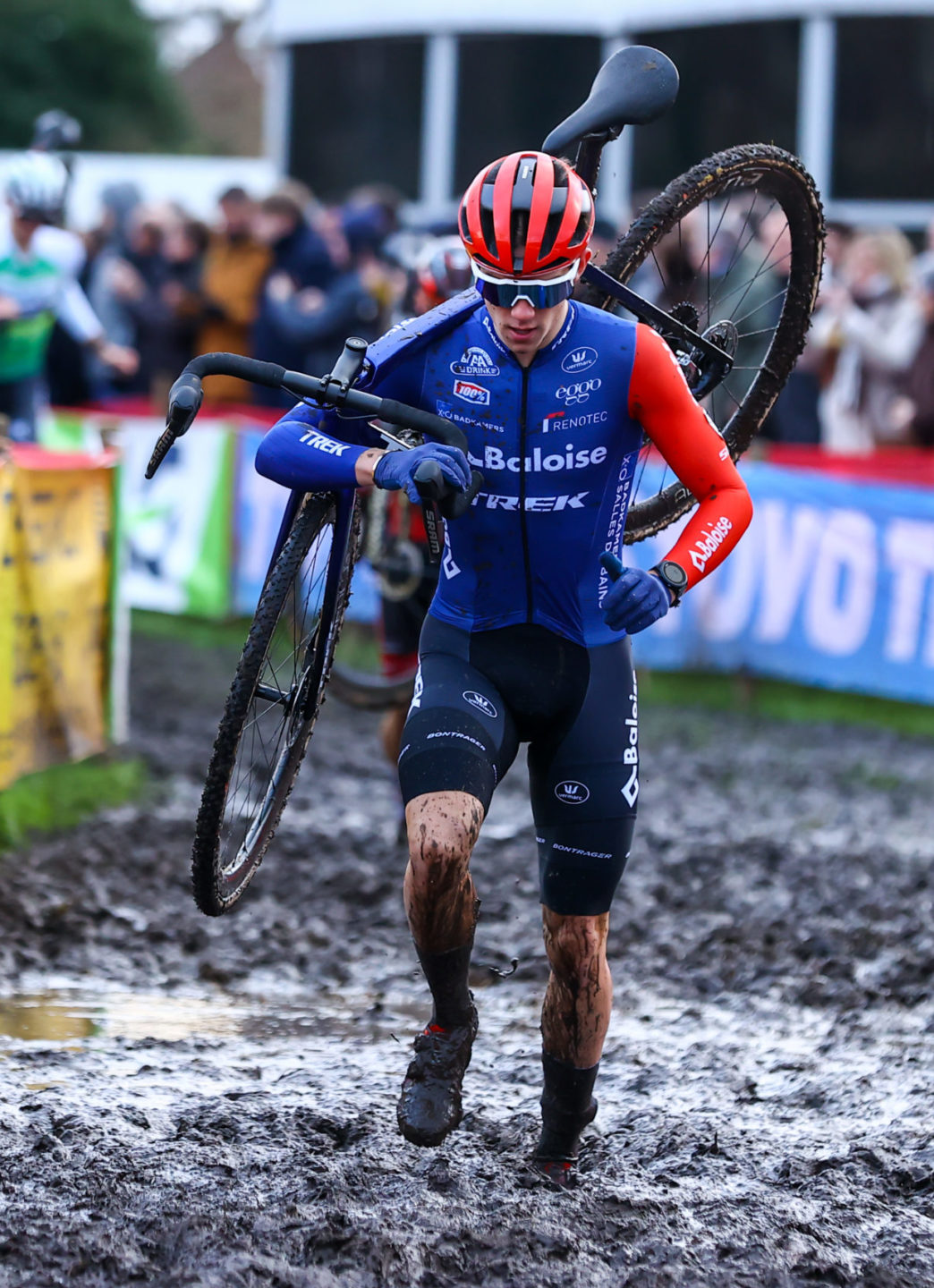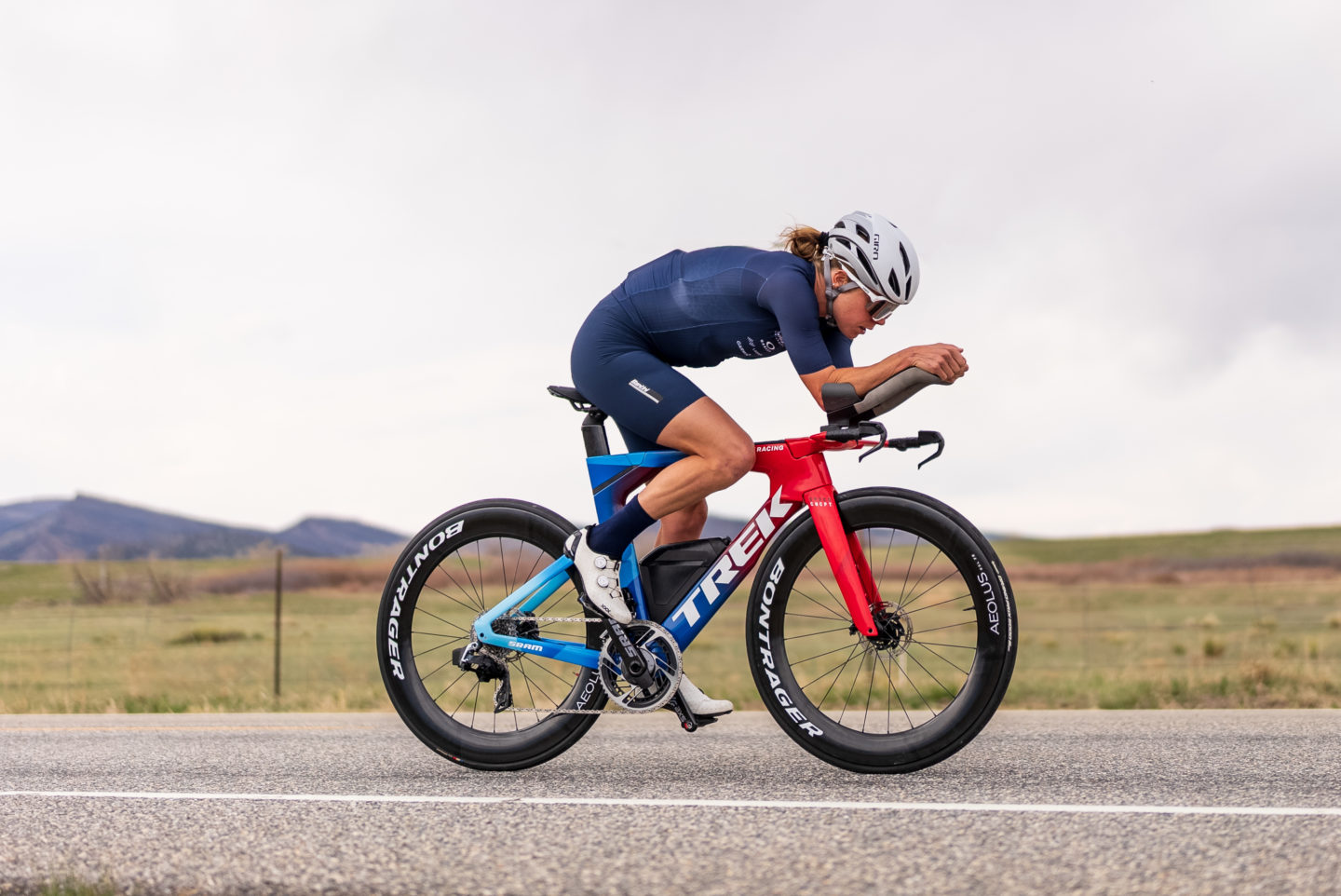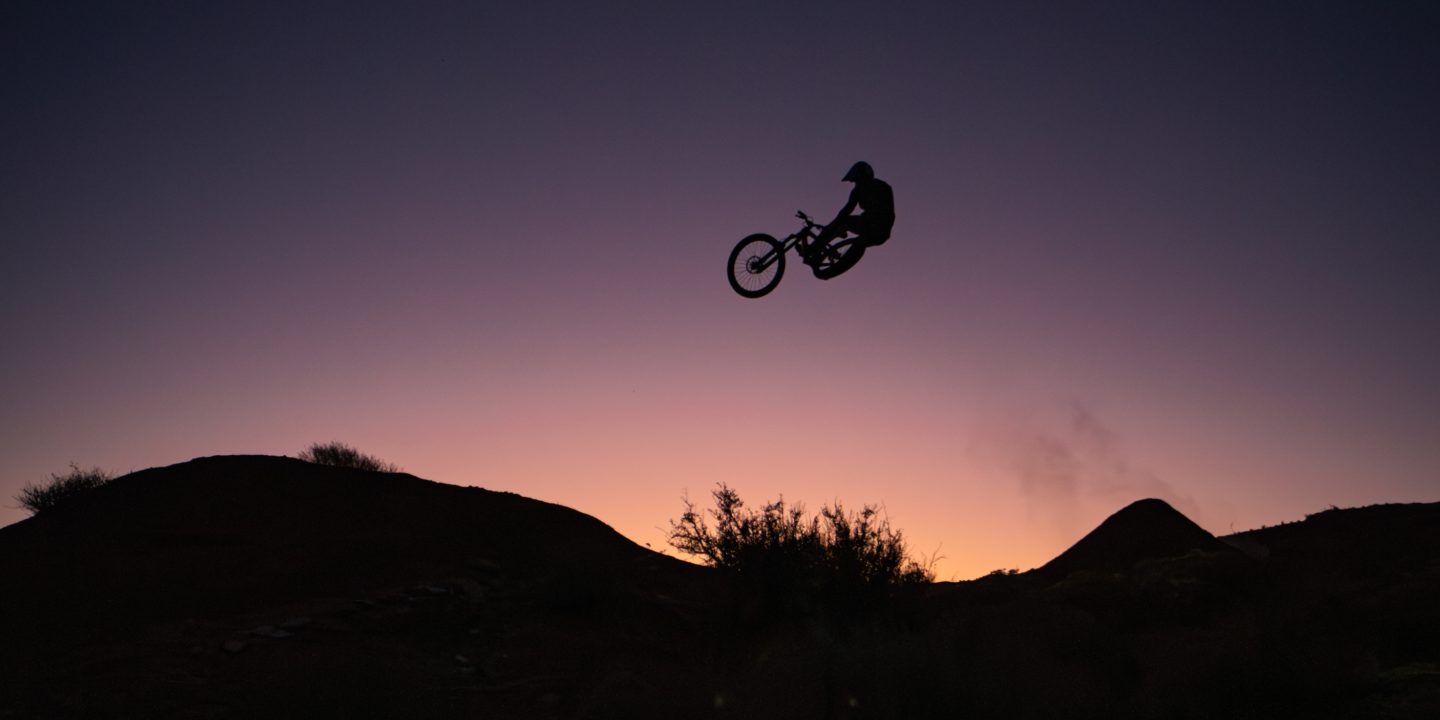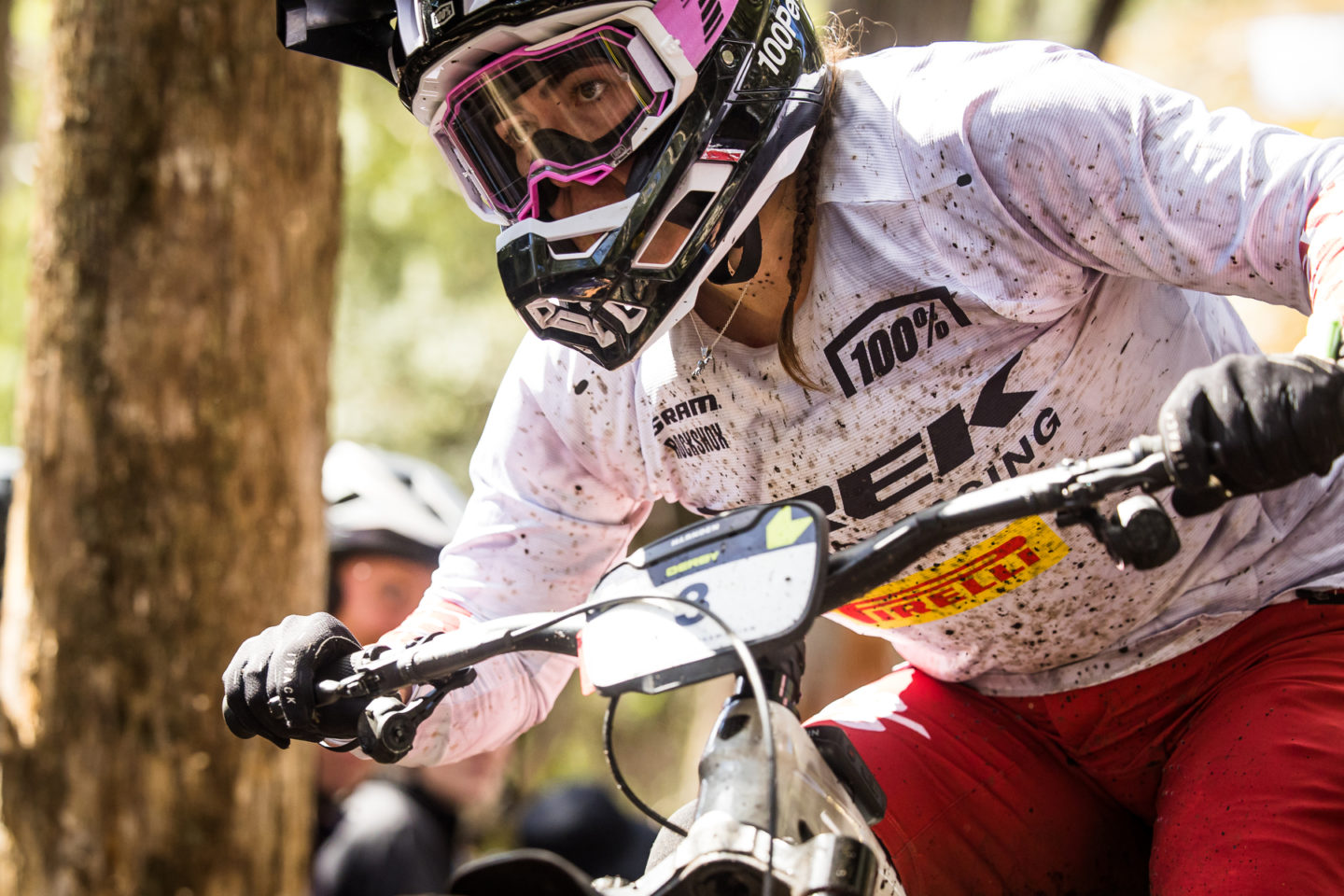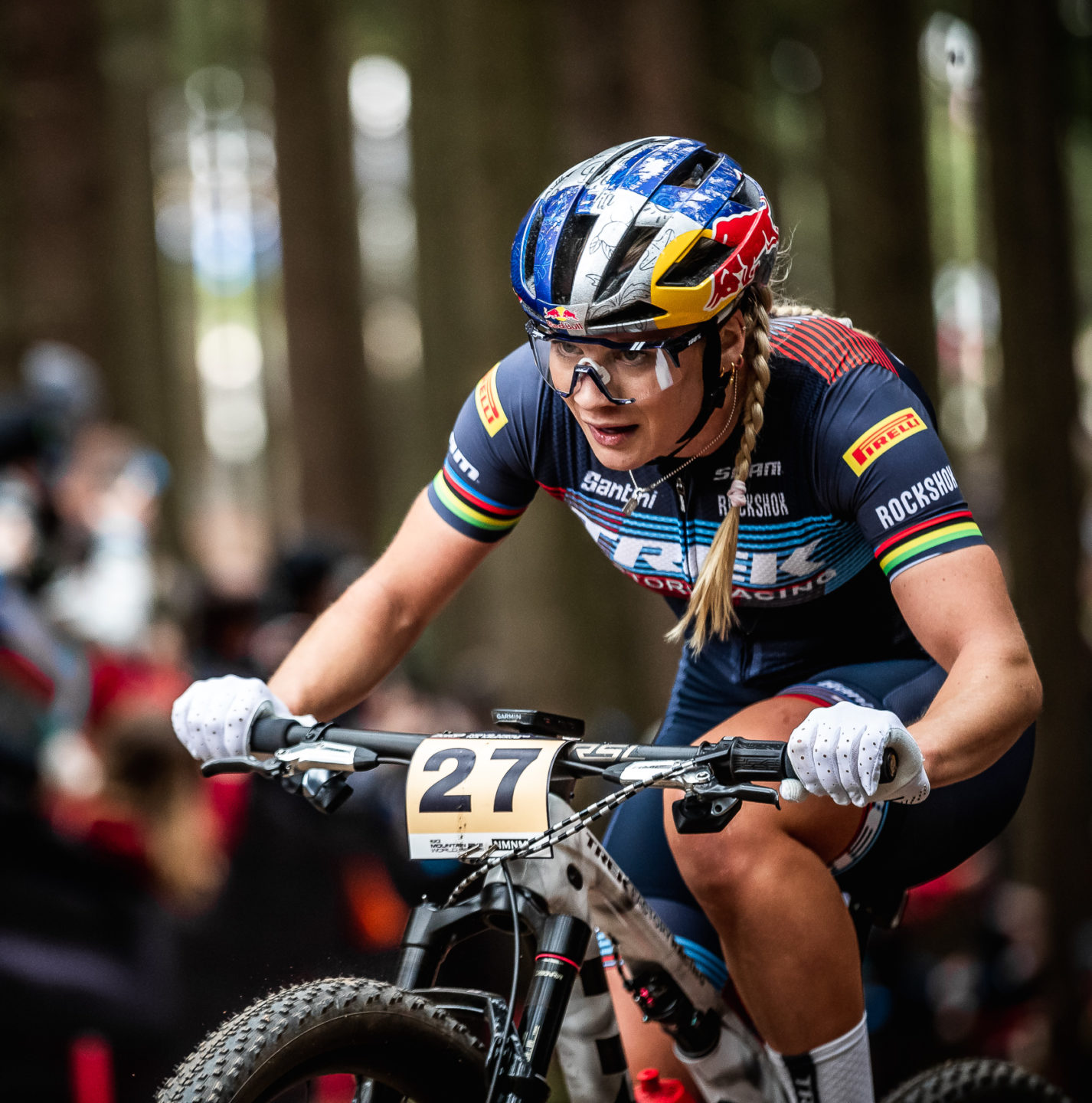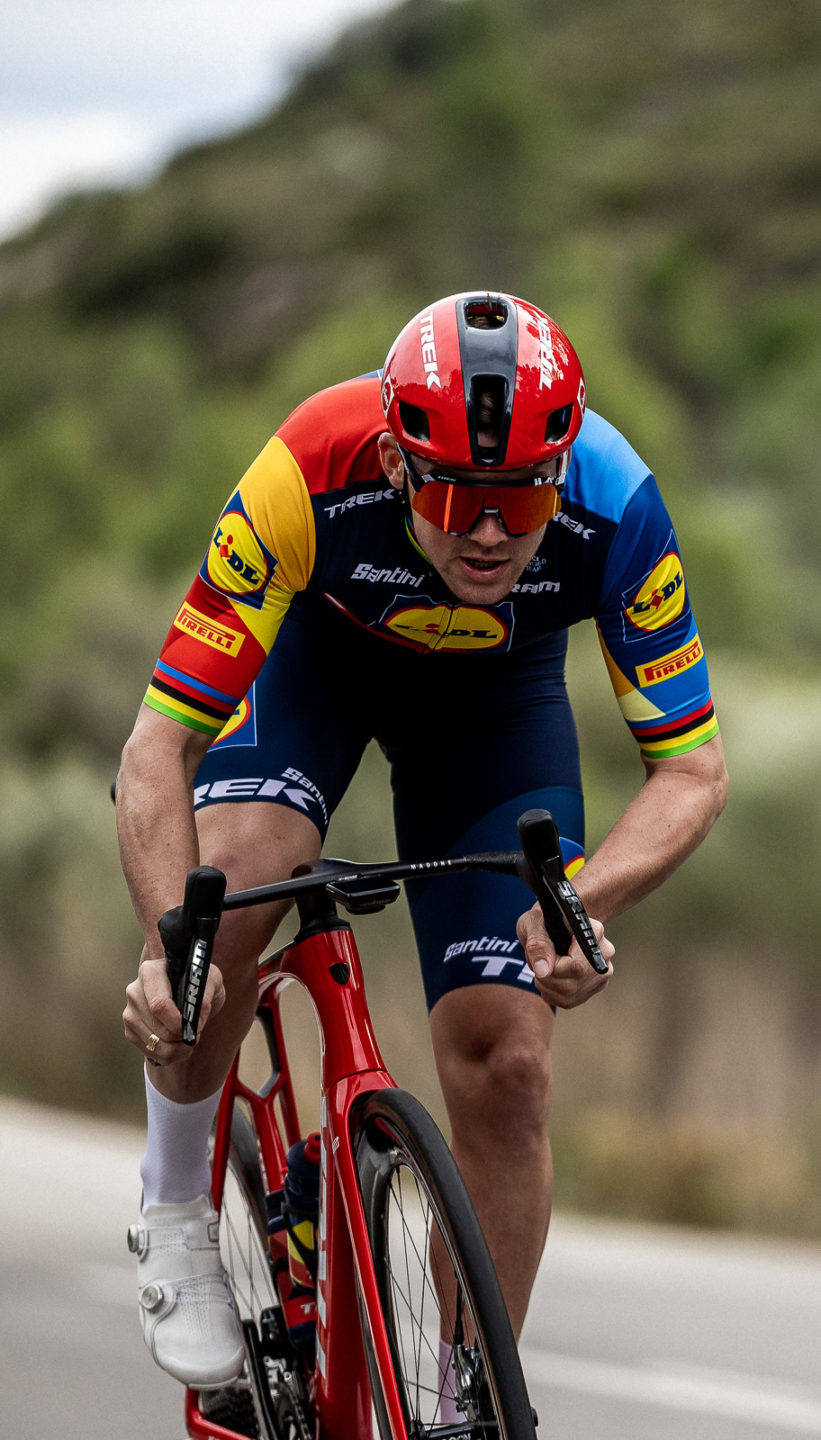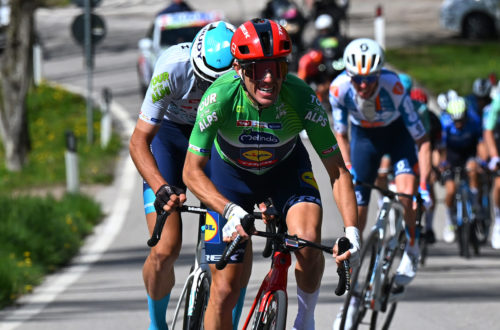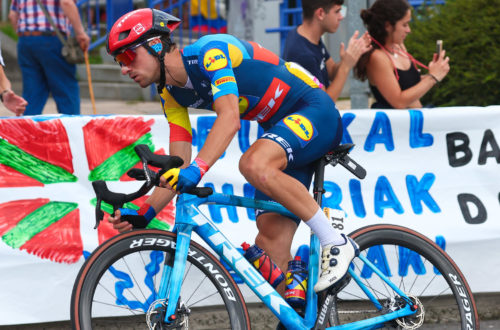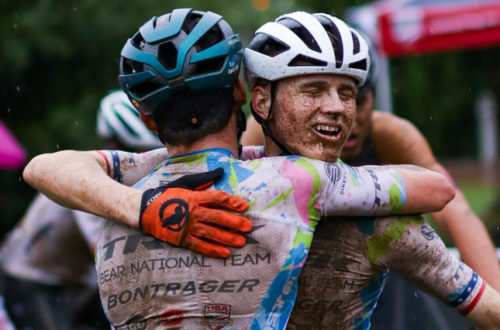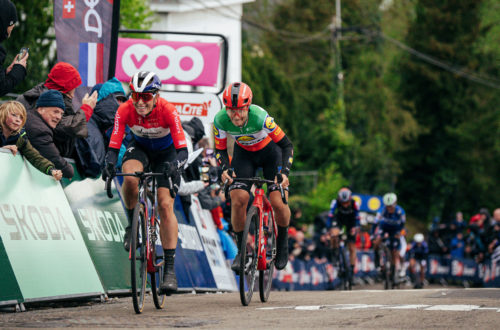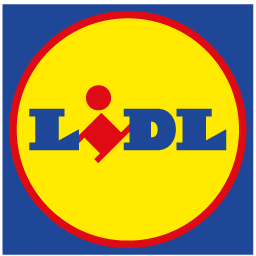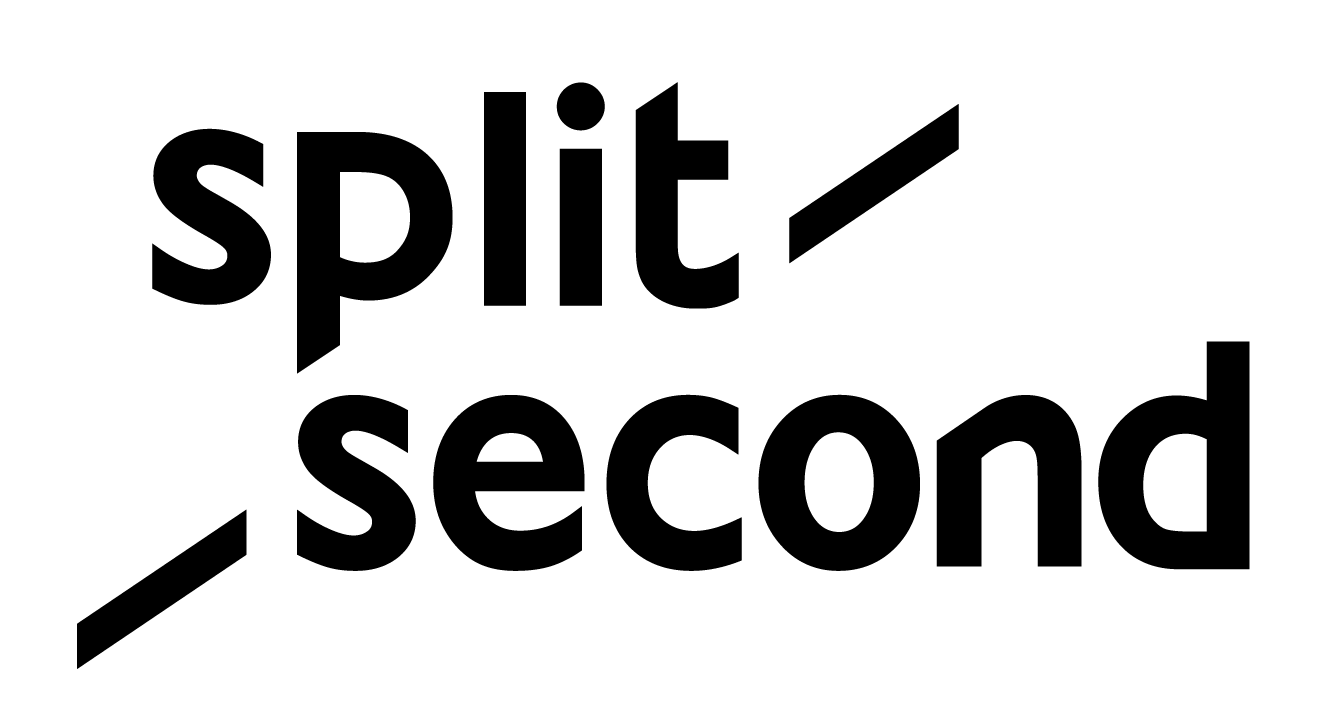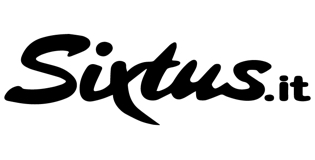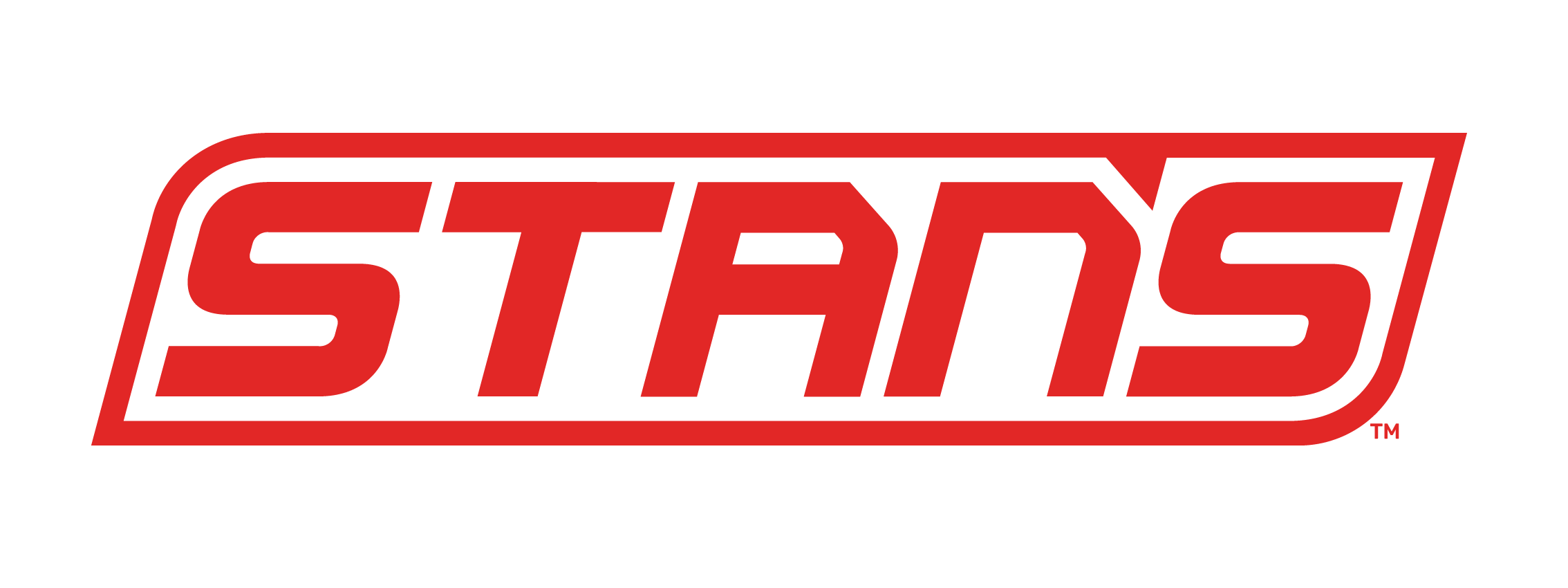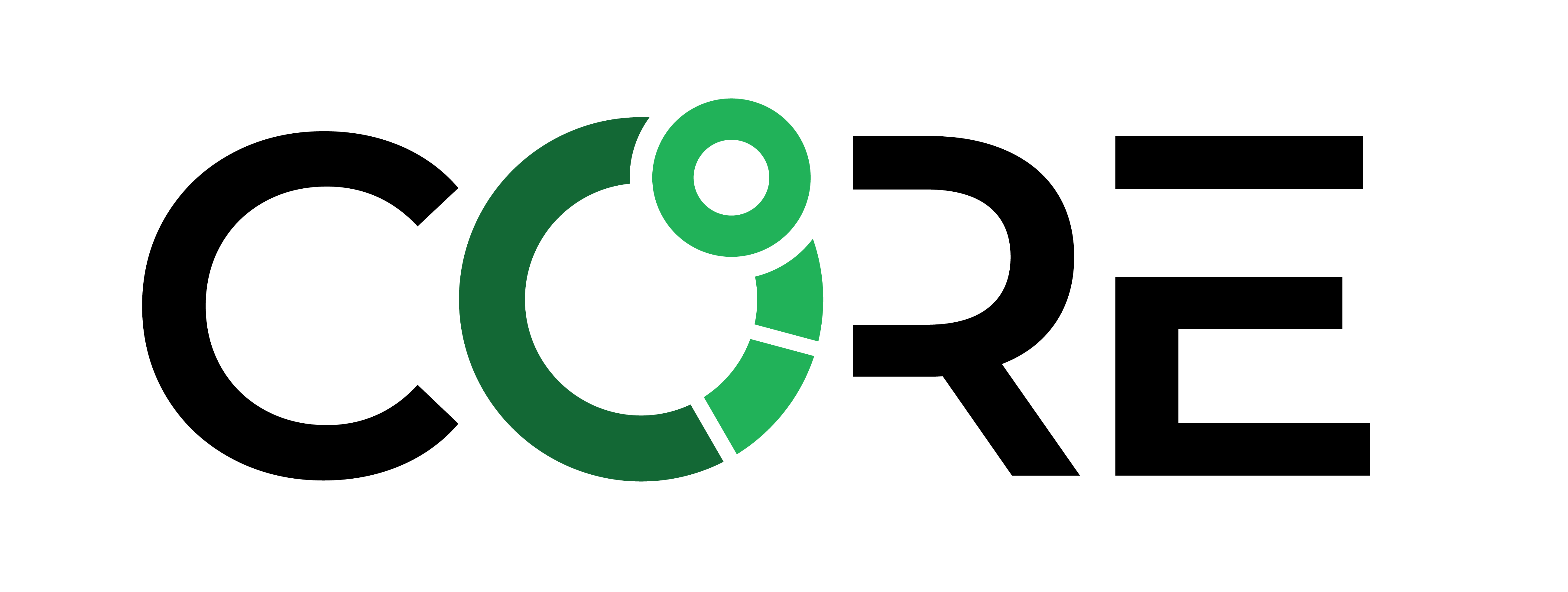Bike fitting has come a long way since the days of measuring inseams and arm lengths to determine a proper position. Through years of scientific research and technological advances, getting a fit has changed: it can reap huge benefits for the average cyclist, and even for the seasoned professional, it can mean the difference between finishing fourth and winning.
There are oodles of fitters out there; walk into any bike shop, and you’re likely to find some type of bike-fit system, or fit professional, to help you in achieving a decent position, but for a WorldTour team like Trek-Segafredo, only the best in the business would suffice.

Enter gebioMized
Trek-Segafredo began using the expertise of gebioMized at the team’s conception in 2014 to analyze and optimize each rider’s position, stability, and pedaling technique using cutting-edge technology like motion capture and contact point analysis systems. Pretty rad stuff.
But who exactly is gebioMized, and what is the story behind this peculiar name?
The early beginnings of gebioMized started in 2002 with the development of the first system of pressure mapping with cycling saddles. Working closely with Münster University (renowned for sports biomechanics), GeBioM (the mother company which started in 1994, a spinoff from Münster University) created the first master-thesis to find out the pressure distribution between the pelvis and the saddle and how best to optimize that.
Sports scientist Daniel Schade explained: “From the saddle, it’s a very short way to start thinking about the other contact points as well, to think about the whole position on the bike,” “We started thinking about what happens when we raise up the handlebars, what happens when we lower the seat height, and when we make some changes to the interaction between bike and rider. This was our birth of our bike fitting process and philosophy.”

It quickly grew from measuring pressure distribution on the saddle and making custom saddles to a complete bike fitting solution.
“It then took about four years of development and working together with the University before we came up with the first [bike fit] system to the market,” continued Schade. “So in 2006, we created the brand gebioMized. The first part is the mother company name GeBioM, and the second part is the last part of customized. So it’s GeBioM and customized together. Nobody understood it in the first years; it took a lot to explain the name.”
Over the next years, gebioMized grew into a global organization with fitters worldwide. They were taking bike fitting to another level by using a motion capture system as well as a contact point analysis system that can measure the pressure at all the different contact points, not only on the saddle.

GebioMized and Trek-Segafredo
For four years gebioMized has worked closely with Trek-Segafredo to fit each rider on his bikes, an ongoing process that begins with the first training camp in October, continues in the December and January camps, and then throughout the season as needed.
“The starting point for us is the first team camp directly after Lombardy when we meet the new riders and also follow up with the existing riders on the team. Normally in the first camp we create a baseline and fit strategy for the whole season,” said Schade.
“We are available to the riders the rest of the season, so if there are some urgent questions we can look into the old data, and we can meet with them. It’s a process, and I always like to have this process with each rider. Some riders are not into changes during the middle of the season, they want to concentrate on the races, and that is fine, and others feel there may be a little bit more potential, and then we continue the process over the season as well.”
“We are trying to find out how we can increase a few percentages of performance because in the WorldTour that may be the difference in you winning from being fourth.”
Trek-Segafredo has 28 riders. Each one unique, and each one with an arsenal of two to four different Trek bikes. From the Classics specialists like Jasper Stuyven and John Degenkolb to the climbers and GC leaders like Bauke Mollema and Gianluca Brambilla, the fit is customized to the rider, his discipline, and the Trek bike he will use.
“You always have to find the right match between the bike and the style of the rider,” continued Schade. “If one rider is more dedicated to climbing, for example, we have to make sure that his climbing position is really powerful, and if he’s more a sprinter, we have to make sure that there are not even a few percentages of loss for a sprint.
“For sprinters – and this is a story that I don’t hear very often from other fitters – the first 200K are also very important. If you don’t feel comfortable on the bike for the first 200k, the important part might be missing for your sprint just because you lost too much energy ahead of the sprint. So it’s also a question of how to stabilize the riders, not only for the sprinting position but also for the long time on the saddle before.”

John Degenkolb has used four bikes in 2017: the Domane (Classics), Madone (flatter races and sprinting), Speed Concept (time trials), and the new Émonda disc (races with long climbs and descents). Multiply that by 28 riders, and that’s a lot of fitting. And it’s not just restricted to the lab.
Over two bitterly cold, overcast days in December 2016 and again in November 2017, John Degenkolb and Jasper Stuyven field-tested the Domane and Madone on the cobblestones in Northern France and Belgium. Two full days to find the best fit for the rider on the bike he will use over the parcours he will race in the upcoming Paris-Roubaix and Tour of Flanders.
“I was freezing with Matt Shriver (Trek-Segafredo Technical Director) in the car all day long to make one measurement after another,” Schade remembered about that bitterly cold day in December. “But we wanted to test different equipment and also some bike set-up changes to really measure how the stability changes on the cobblestones. The Domane fit was mainly driven by stability for the cobbles, and then you have the Madone fit which is more driven by having a great aerodynamic position plus a good power transfer – that you don’t lose power by just having too aggressive aero positioning.”

A special case: John Degenkolb
In January 2016 John Degenkolb was one of a group of riders from the Giant-Alpecin team hit by a car while training near Calpe on Spain’s Costa Blanca. Since then, it has been a long road back for Degenkolb, who missed a good chunk of the 2016 season, including the entire spring Classics.
It was a life-altering crash: It changed Degenkolb’s outlook on how he approached cycling but also his life.
Said Degenkolb: “The biggest lesson from last year is that I have to listen to my body even more than before. In a way, the experience has made me a more professional rider: I try to do everything 100% and really concentrate on the important things, in cycling, and in life.”

Near the end of 2016, the announcement came that Degenkolb had signed with Trek-Segafredo for the next two years, and his first meeting with gebioMized was at the team’s October camp.
“From a personal side, when we got the news that he signed with Trek-Segafredo we were really happy to hear that,” said Schade. “He’s always positive and optimistic, and we were super happy to start working with him. From a fitter’s perspective, I already knew that this would be tricky because of his crash in 2016. It was clear to us that there might be asymmetry in the body, weak spots, some muscles that were not functioning 100% as before, so it was also a challenge for us.”
After the initial meeting and ahead of the team’s biggest early-season camp in December, Degenkolb made a three-hour drive to Frankfurt for a full day in the gebioMized lab.
“He arrived at 9 am, and we worked together until I would say 7 or 8 pm that evening. It was very good to do that to get a very intensive baseline from his old position, but also to understand what happened in that crash and what happened after that crash. We measured everything, and then we made some decisions and some changes,” Schade explained. “With John, it is really a process, and I think in the winter we changed his fit two or three times. It was a series of steps, and I think it was the right strategy to accept the crash, and the results coming from the crash, and work around them.”

From Degenkolb’s perspective, gebioMized came into the picture at the right time. After winning Milan-Sanremo and Paris-Roubaix in 2015, Degenkolb’s accident in early 2016 had him struggling to return to his best during the latter part of the season. Changing teams gave him a fresh start and renewed motivation, and it also gave him cutting-edge support like gebioMized.
“It’s quite an intensive cooperation between John and us.”
Degenkolb explained: “When you change a team, you have to change the whole set up: new shoes, new bike, new saddle – everything is different. You can make the same position as you had, but still, it’s different, and GebioMized have the right equipment to measure everything. In the end, this was super, super helpful to get a good start like this in a new team.
“We continue to work really close together to adjust my positioning, especially for the insoles in the shoes. They have a special system to measure the pressure and find out the balance in your shoes. For me, this was an immense help to be stable on the bike and also get rid of some knee pain.”
While Degenkolb began 2017 with a bang, winning a stage in Dubai Tour in February, he was left frustrated and winless for the rest of the season. While the results may not be coming in as he expected, his work ethic has not eased. He knows that working closely with progressive experts like gebioMized can help in getting him on the top step of Paris-Roubaix again.
“I believe what I showed in 2015 was not my maximum potential and that I can develop more. I am convinced that with all this great support it can help me even more to increase my performance,” Degenkolb added. “I already see that all the changes we have made with gebioMized has helped me, and it is these little things that at the end of the day can make a difference. I feel I am stronger, it’s just that I have been missing a little luck.”
